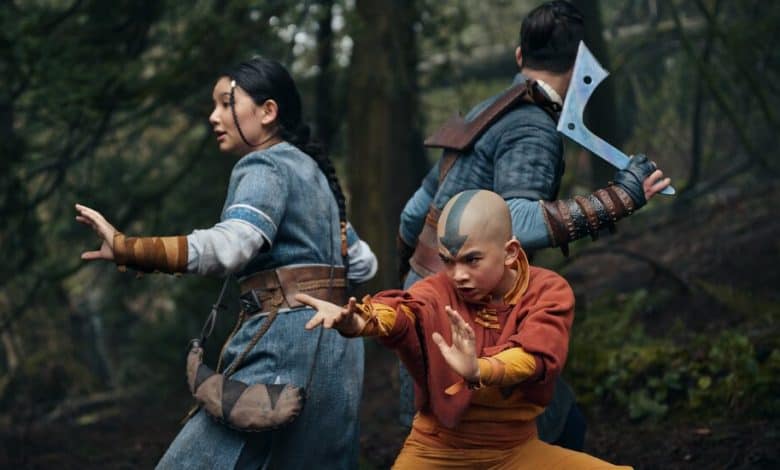‘Avatar: The Last Airbender’: Been There, Saved That

Nickelodeon’s 2005 series “Avatar: The Last Airbender” was a sprawling odyssey that combined intricate world-building, meticulous references to Asian and Native cultures, lively humor and sharply plotted drama, all animated in a charming, anime-inspired style. It was an unqualified success, attracting millions of viewers and heaps of critical praise. The series introduced a world so rich, complete and full of its own histories and myths and traditions that it never needed a follow-up.
But we know that’s not how things work.
In 2010 there was the famously whitewashed live-action film “The Last Airbender,” which was, deservedly, met with a ferocious torrent of fan-fury. The sequel series, “Avatar: The Legend of Korra,” was more in touch with the original, but still unnecessary. And the same can be said for Netflix’s “Avatar: The Last Airbender,” the streamer’s latest big money, live-action adaptation that proves just how difficult it is to capture the magic of a beloved original.
Like the original series, Netflix’s “Avatar: The Last Airbender” also takes place in a fictional Eastern world of four nations: Air Nomads, Water Tribe, Earth Kingdom and Fire Nation. In this world a select group of people from each nation are “benders,” able to manipulate their element. For a century the Fire Nation has waged a winning war against the others — during which time the only hope for peace, the avatar, the sole master of all four elements, disappeared. When two Water Tribe siblings, Katara (Kiawentiio) and Sokka (Ian Ousley), discover the prodigal avatar, a 12-year-old Air Nomad named Aang (Gordon Cormier), the three embark on a journey to complete Aang’s training so they can save the world from the threat of the Fire Nation.
This “Avatar” attempts to condense several story lines, many of which are spread out across dozens of episodes in the robust sprawl of the original, into a tight eight episodes. Some of the economies the adaptation uses in fusing certain narratives — making new connections and throughlines among stories that were originally set in different locales, for example — is neatly done. And thanks to the involvement of the creators, Michael Dante DiMartino and Bryan Konietzko, each subplot, even when moved or modified, remains faithful, if not exactly in detail then absolutely in spirit, to that of its animated counterpart. The show is also full of carefully placed Easter eggs from the original. Something as minor as a background character’s passing mention of the Avatar encountering some “canyon crawlers” in an episode will immediately clue fans in to the dangerous beasts Team Avatar faced in Episode 11 of the Nickelodeon version.
But “Avatar” also tries so desperately to rework its stories that the pacing often suffers; adventures become a bit too convoluted, and there’s so much stacked action that it’s easy to lose track of the stakes and sense of urgency in any one plotline.